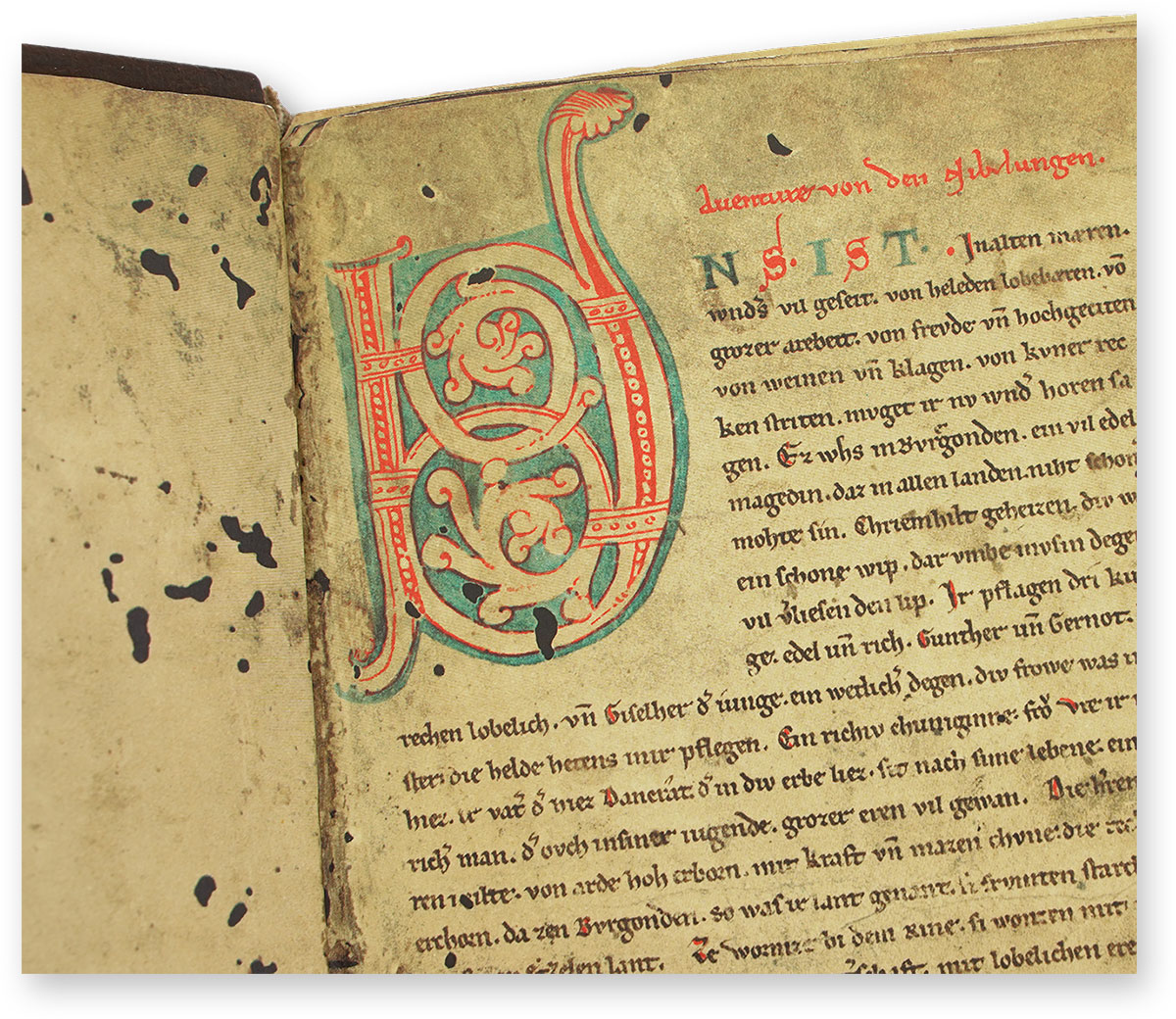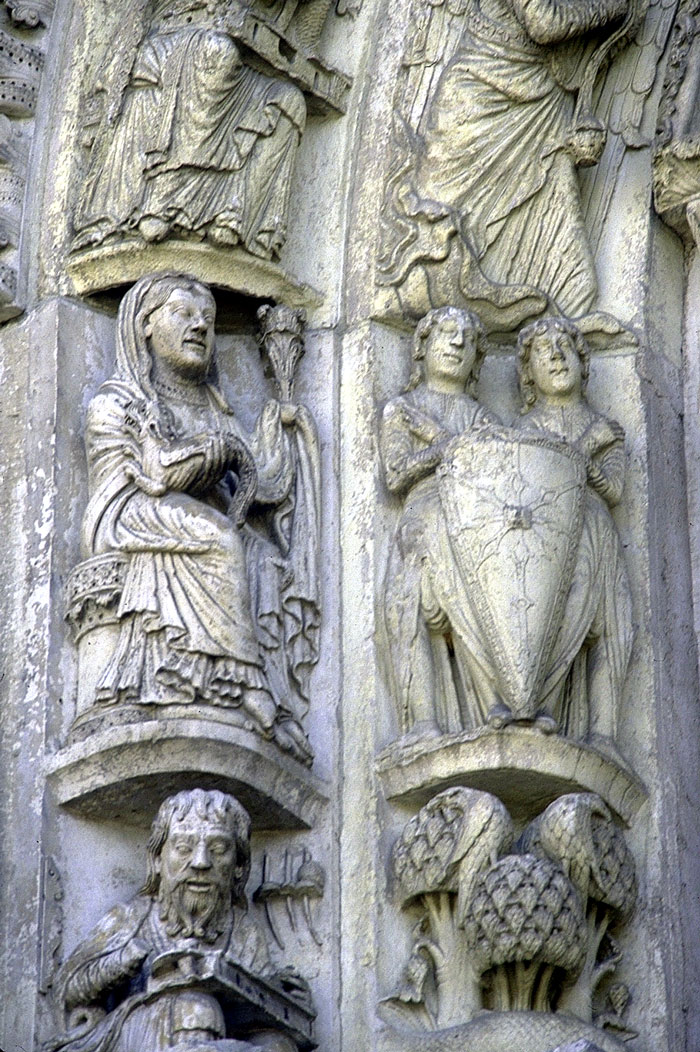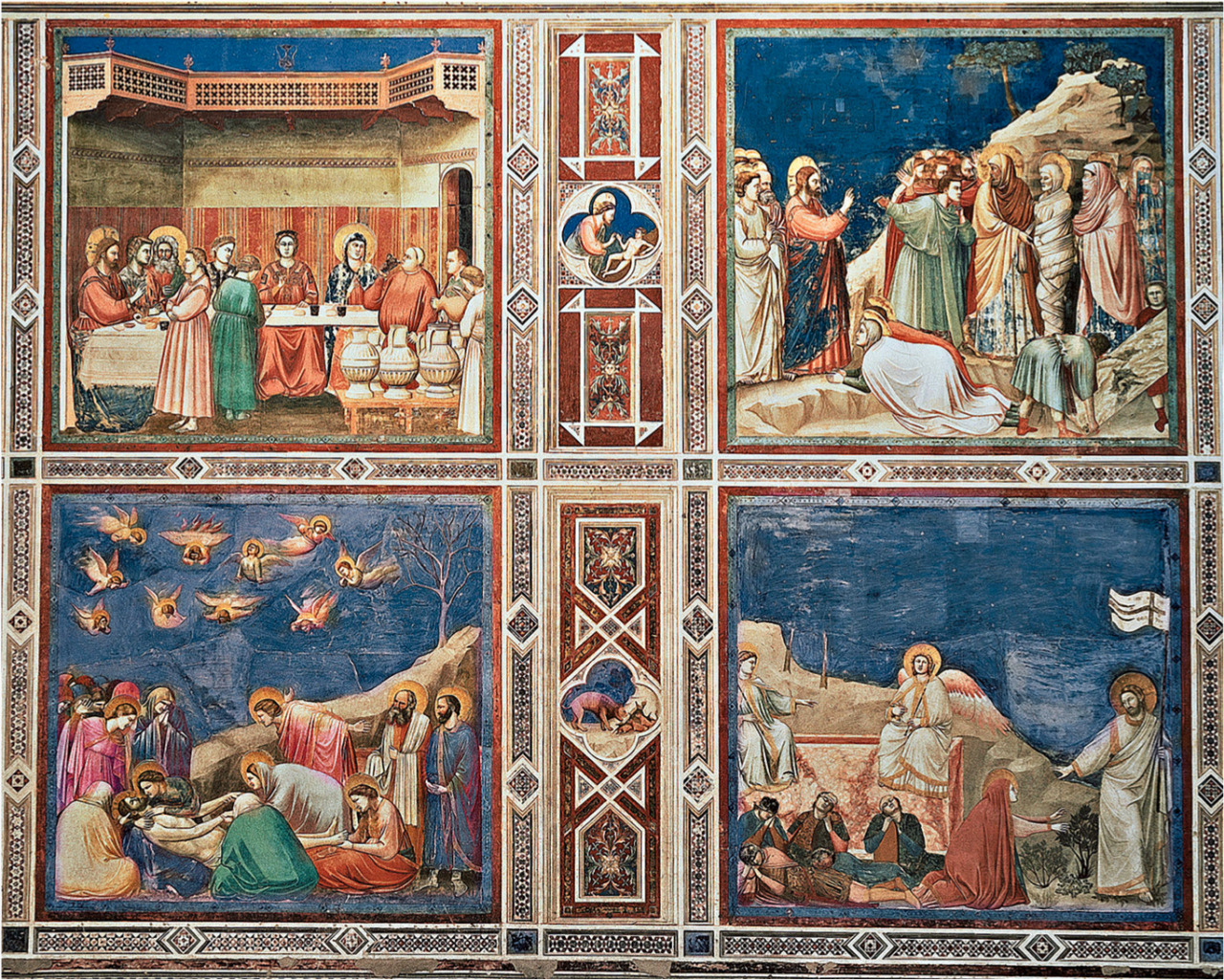Survey of Art I --- Exam 3
1/44
There's no tags or description
Looks like no tags are added yet.
Name | Mastery | Learn | Test | Matching | Spaced |
|---|
No study sessions yet.
45 Terms
Animal Style
Animal motifs, typically found in Germanic art. Known as a geometric style.
Interlace
Serpentine motifs found in art.
Cloissone
The technique of creating designs on metal vessels with colored-glass paste placed within enclosures made of copper or bronze wires, which have been bent or hammered into the desired pattern.
Vellum
Animal skin stretched and dried into paper.
Tempera Paint
Pigment mixed with egg whites. Typically used within manuscripts.
Matthew, Mark, Luke, and John
Who are the four evangelists?
Initial
A letter that begins a major division in a text. These can range from major decorated initials, constituting mini-paintings that often opened a manuscript, to minor initials penned in red ink by Rubricator to highlight text and chapter readings.

Emperor of the Holy Roman Empire, who ruled countries such as France, Northern Italy, and more; known to b a fanatical Christian.
Who was Charlemagne (Charles the Great)?
“Renewal of the Empire of Romans”
What does “Renovatio Imperri Romanorum” mean?
The Benedictians
Who did Charlemagne go to to help get rid of the Muslims?
Masonry
The craft of building a structure with brick, stone, or similar material, including mortar plastering which are often laid in, bound, and pasted together by mortar.
Can also refer to the building units (stone, brick, etc.)
Roman and Carolingian cultures
What does Ottonian art revive?
Holy Roman emperor who consolidated the Italy by marrying Adelheid, as well as the German Reich by his suppression of rebellious vassals and his decisive victory over the Hungarians.
Who was Otto I?
“In the Roman manner”
What does “Romanesque” mean?
Bayeux Tapestry
An embroidered cloth that depicts the events leading up to the Norman Conquest of England, led by William the Conqueror challenging Harold II, King of England, and culminating in the Battle of Hastings.
Travel to tombs on holy sites
Travels visiting relics
Stops along the way to visit other churches (traveling shops) produces town income
Relics become important to towns’ economic status
How did pilgrimage impact the Romanesue period?
Brings West into contact with more sophisticated cultures (East Islam & Byznatine)
Creates demands for goods from the East & higher standards for Western art production
Between 1095-1190, three great crusades launched from France to take Christian sites from Muslim contro. There was lots attempts at atoning for sins, winning salvation, and glorifying gold. Achieves little.
Import for the exposure of the West to East as well as strengthening of towns that served to supply crusades.
How did crusades impact the Romanesue period?
Contact with the East leads to trade and port cities
Trade creates the mercantile class
Pilgrimage increases money in towns
How did urban development impact the Romanesue period?
Jerusalem - Crucifixion
Rome - Peter & Paul
Spain - St. James
Known pilgrimage routes in the Romanesque Period?
Relics
Pieces of bone or items associated with the Saints, or Jesus & Mary.
Holy Robbery
Stealing Saints’ relics
Proto-Gothic
Pre-Gothic
Cloister
A covered walk in a convent, monastery, or cathedral, typically with a wall on one side and a colonnade open to a quadrangle on the other.

Clunaic (part of the Monastic Reform)
Scholarly & artistic focus
Cistercain (part of the Monastic Reform)
Reject artistic emphasis, strict discipline
12th Century, France
When & where does the Gothic period start?
Universities (connection between the church & education)
What starts up during the Gothic period?
Scholasticism
Movement made by schoolmen; catholicism + classic philosophy (like Aristotle or Plato)
Religious Orders
Catholic missionaries
St. Denis
What is the first Gothic cathedral in medieval France, which served as a model for subsequent Gothic cathedrals and churches in France and beyond, including Notre-Dame in nearby Paris?
Abbot Suger
Who was widely credited with popularising Gothic architecture?
Voussoirs Chartes

She was considered the last line of defense against going to hell.
Why did people in the Gothic period start widely worshipping the Virgin Mary?
Chartres Cathedral
What building was burned down in the Fire of 1194 and then later rebuilt?
“Our Lady”
What does “Notre Dame” mean?
Perpendicular Gothic
An emphasis on tall vertical lines that run perpendicular to the ground, popularized during 14th & 15th century England.
Canes
Metal framing devices used in windows.
Ornate
English gothic is…
Proto-Renaissance
The style or movement of art in Italy prior to the arrival of the Early Renaissance in the 15th century
Giotto di Bondone
“Madoma Enthroned w/Angels”
Cimabue’s student, ________ surpassed his teacher by creating more realistic paintings, like the __________
Scrovegni
A man from a family of 14th century “loan sharks” who was hated by society. Commissions Giotto to build the Arena Chapel to atone for his family’s sins.
Milan Cathedral
In the 14th century, the most powerful Milan families, the Biscontti and Sporsa, hired lots of Europoean architects to build the __________ (ARCHITECTURE BY COMMITTEE)
Byzantine Frontality
Giotto puts an end to ________.
Marriage at Cana
Raising of Lazarus
Resurrection (Noli Me Tangere)
Lamentation
(Frescos on north wall of the Scrovegni (Arena) Chapel in Padua, Italy), 1305-6
What Giotto paintings are these?

The plague (destroys art careers until the Renaissance)
What happens after Giotto dies?